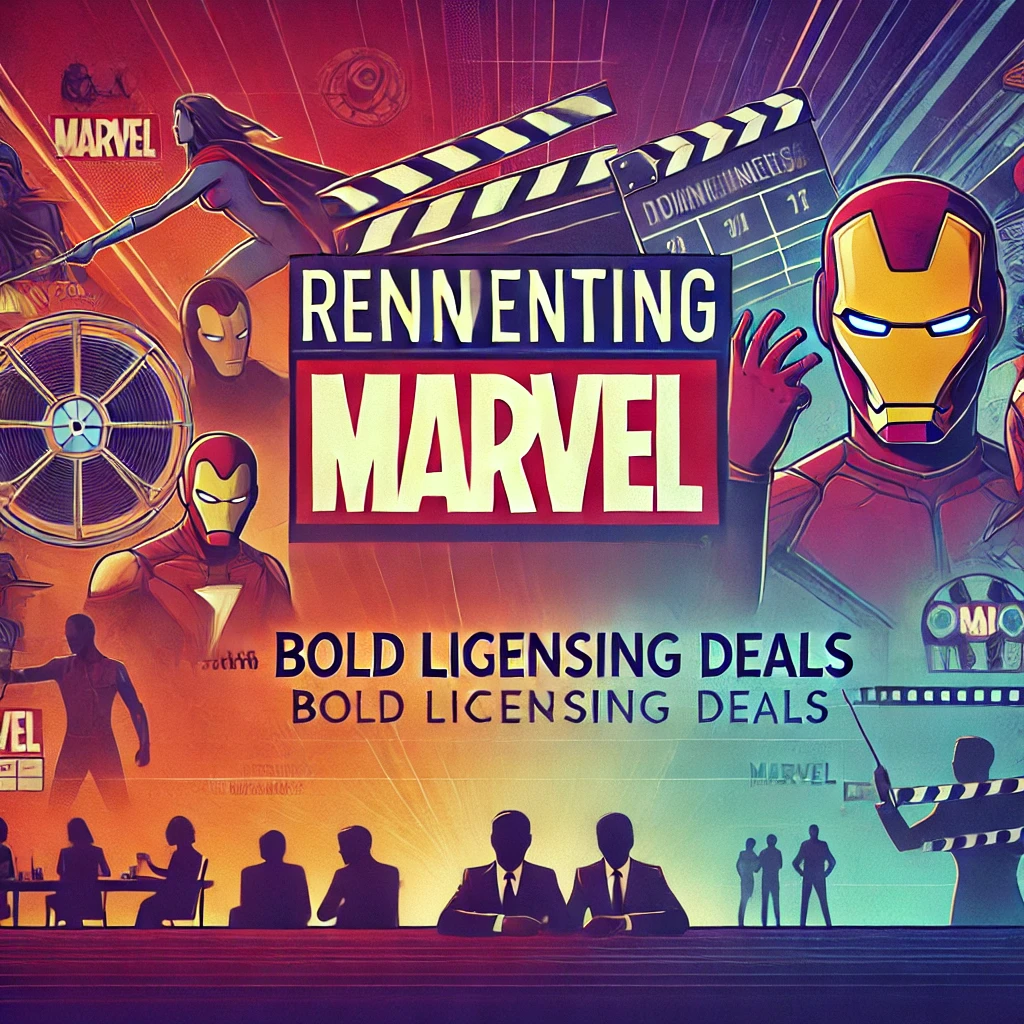Imagine staring down the barrel of bankruptcy, then emerging as a global entertainment powerhouse. That’s the Marvel story—a tale of daring strategy and creative licensing that every startup founder should know. 💡
How did Marvel go from financial ruin to blockbuster success? It’s all about leveraging their assets in innovative ways. Here’s how you can apply their lessons to your own startup journey. 🚀
Recognize Your True Assets
In the 1990s, Marvel was struggling. Comic book sales were declining, and the company filed for bankruptcy in 1996. But even in those dark times, Marvel understood its greatest asset: its vast library of characters. 🦸♂️🦸♀️
From Spider-Man to the X-Men, these characters represented untapped potential. 🔓
Takeaway: Identify your startup’s unique assets. 💪 It could be technology, intellectual property, or even a dedicated community. Assess what you have that others may want or need, and don’t underestimate its value. 💰
Think Beyond Your Core Business
Marvel could have stuck to comics, but that would have been a dead end. Instead, they explored other avenues, like licensing characters for movies, TV shows, and toys. This shift didn’t happen overnight, but it opened new revenue streams that saved the company. 💸
Takeaway: Diversify your business model. 💼 If your startup is focused on one product, think about adjacent markets. 🤔
Could your software be licensed for different industries? Could your consumer product be adapted for new uses? Exploring these possibilities can create multiple income streams and buffer against market changes. 📈
Partner Smartly, Not Just Widely
Marvel’s partnerships were strategic. They didn’t just hand over the rights to their characters—they made deals that allowed them to retain creative control. 🎨
The collaboration with Sony for Spider-Man and Fox for X-Men brought in revenue without sacrificing the integrity of their brand. 🔥
Takeaway: Be selective with partnerships. 👀 Whether you’re licensing technology or co-developing a product, ensure that partnerships align with your brand values and long-term vision. 🌟 Maintain control over what matters most to your company. 🚀
Don’t Fear Bold Moves
One of Marvel’s boldest moves was creating its own studio. Launching with the 2008 film Iron Man, Marvel Studios bet big on themselves, investing in a shared universe of movies. 🎬
This gamble paid off spectacularly, creating the Marvel Cinematic Universe (MCU) and making billions. 💰🌎
Takeaway: Take calculated risks. 🎲 Startups are inherently risky, but transformative growth often requires stepping out of your comfort zone. Invest in new products, experiment with different markets, or even redefine your business model. 💡
Big risks can yield big rewards. 🎯
Leverage Licensing as a Growth Strategy
Licensing can be more than just a revenue source; it can be a growth catalyst. Marvel used licensing not only to generate income but also to increase the visibility of its characters. 🎉
Each movie, toy, and TV show created more brand recognition, paving the way for future success. 📣
Takeaway: Use licensing to scale your brand. 📈 Whether it’s licensing technology, intellectual property, or even co-branding, think about how these deals can amplify your market presence. Licensing should be a strategic part of your growth plan, not just an afterthought. 💼
Stay True to Your Core
Despite all the changes, Marvel never forgot its roots. They kept producing comic books, maintaining a direct connection with their fan base. This commitment kept their brand authentic and loyal fans engaged. 🧑🎤
Takeaway: No matter how much you diversify or grow, stay connected to what makes your startup unique. Authenticity resonates with customers and builds long-term loyalty. 🌱 Keep your core values intact as you scale. 🌍
Adapt and Pivot as Needed
Marvel’s history is full of pivots—from licensing to creating its own studio. The company adapted to market trends and audience preferences without losing sight of its mission: to bring its characters to life in compelling ways. 💪
Takeaway: Be willing to pivot. 💡 Market conditions, technology, and consumer behaviors change rapidly. Your ability to adapt will determine your survival and success. Keep an eye on trends and be ready to shift your strategy when necessary. 📊
Embrace Your Underdog Story
Marvel’s comeback is a classic underdog tale. They went from bankruptcy to being a dominant force in global entertainment. This story resonates because everyone loves a comeback. 💥 As a startup founder, your journey may have similar ups and downs. ⚡
Takeaway: Don’t shy away from your struggles. Every obstacle is a learning experience. 💪 Share your story authentically, and use it to inspire your team and community. Your resilience could be your most compelling asset. 🌟
Key Lessons for Startups
- Identify and leverage your unique assets. 💎
- Don’t be afraid to diversify and explore new markets. 🌍
- Choose your partners carefully, ensuring alignment with your goals. 🤝
- Take calculated risks to drive transformative growth. 🎯
- Use licensing as a strategic growth tool. 🚀
- Stay authentic and connected to your core values. ❤️
- Be ready to pivot and adapt to changing conditions. 🔄
- Embrace and share your underdog story. 💥
Marvel’s transformation is more than just a business success story—it’s a blueprint for startups. 💡 By recognizing their assets, taking bold risks, and staying true to their core, they turned a failing company into a cultural phenomenon. 💥
As a startup founder, you have the same potential to reinvent and redefine your industry. Take inspiration from Marvel, and start crafting your own blockbuster story. 🎬🚀










